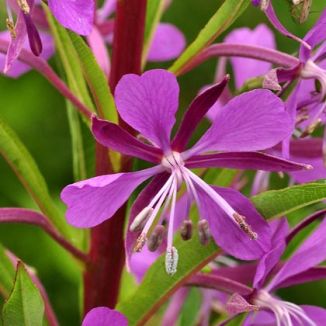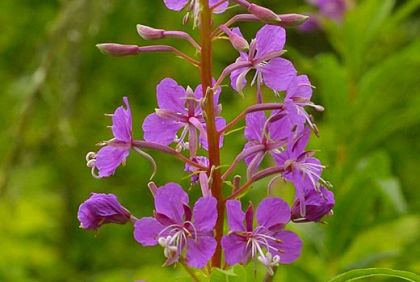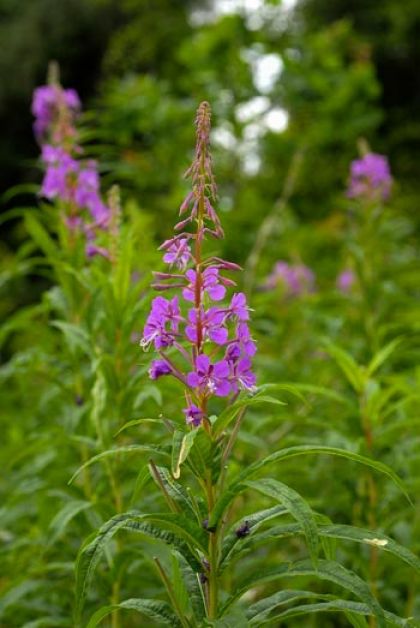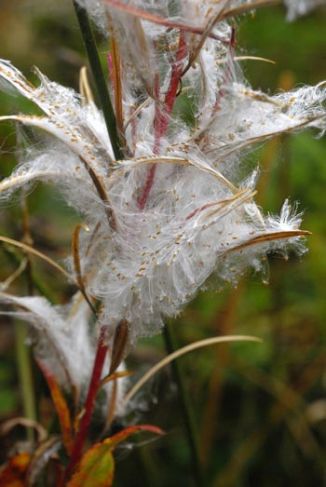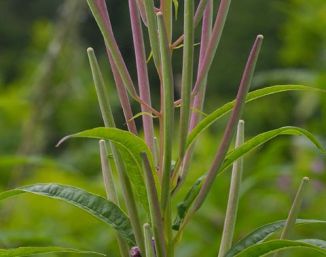Also known as Epilobium angustifolium, this beautiful, tall, vigorous, showy perennial graces the margins of woodland, bogs, railway embankments and roadsides from June to September and can reach a height of almost 2 metres. It has slightly unequal, notched, four-petalled deep pinkish-purple flowers (15-25mm across) growing up a long spike. A hairy plant, it has oblong to lanceolate, coarsely toothed leaves. In autumn the downy seed pods split into four and releasing numerous long plumes of cottony hairs with tiny light seeds. This plant has become quite widespread across Ireland, possibly because it seems to thrive on disturbed land. This plant is native to part of the country and has been introduced to other areas. Formerly known as Chamerion angustifolium and Epilobium angustifolium, it belongs to the family Onagraceae.
I first identified this plant in Dalkey Quarry in 1975 and photographed it close to the Grand Canal at Vicarstown, Co Kildare in 2004.
If you are satisfied you have correctly identified this plant, please submit your sighting to the National Biodiversity Data Centre
